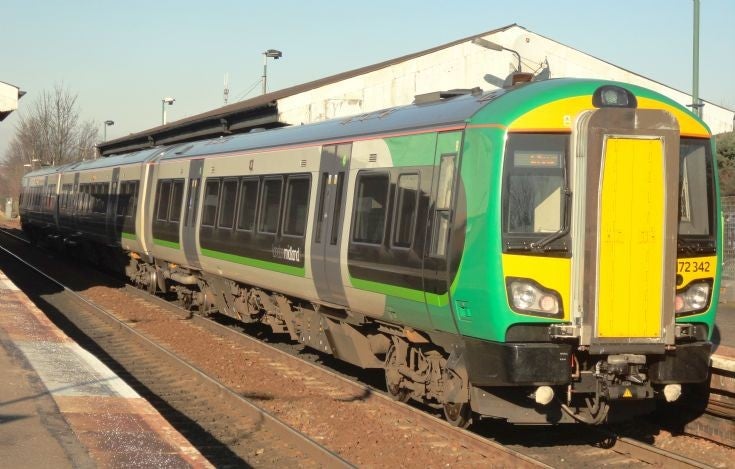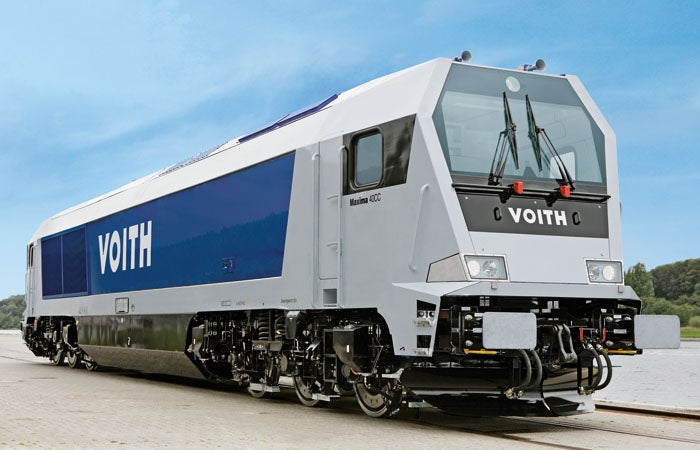 by "Cé hé sin" (michael-m-mouse)
by "Cé hé sin" (michael-m-mouse)
Published 01/09/2017 at 17:56
 by "Cé hé sin" (michael-m-mouse)
by "Cé hé sin" (michael-m-mouse)
Published 01/09/2017 at 17:56
Tags: Trainlopnik
STARS: 1
In a train.
As so. It takes until about 2 min to engage sixth in a ZF ‘box as commonly and more usually found in buses. Actually, it engages several sixth gears, one for each car.
!!! UNKNOWN CONTENT TYPE !!!
 "Wpro3" (Wpro3)
"Wpro3" (Wpro3)
01/09/2017 at 18:32, STARS: 0
I haven’t seen a loco with a transmission or gearset. Direct drive traction motors are the norm
 "Cé hé sin" (michael-m-mouse)
"Cé hé sin" (michael-m-mouse)
01/09/2017 at 18:59, STARS: 1
They use electric drive on locos because of the difficulty of building a hydraulic transmission strong enough to cope, but this is a multiple unit which is increasingly the norm for passenger trains and the load is much less so hydraulic or mechanical (they refer to a conventional automatic as mechanical whereas a hydraulic one uses a separate fluid coupling for each gear) is now the norm. It’s more efficient.
Here’s the train:

There’s a 483 bhp engine under each car so the bus-derived gearbox can easily cope.
Having said that, here’s a 4,000 bhp diesel hydraulic loco with just two gears. It was a commercial failure as it answered a question few asked (and also because freight is usually hauled by mains electric locos in continental Europe)

 "Wpro3" (Wpro3)
"Wpro3" (Wpro3)
01/09/2017 at 20:36, STARS: 0
I don’t see how adding a fluid coupler : hydraulic would be more efficient. Creates losses compared to direct drive electric motors
The EMD switcher engine I operate has “gears” called power throttle notches. Each notch applies more amperage to the traction motors
 "Wpro3" (Wpro3)
"Wpro3" (Wpro3)
01/09/2017 at 20:40, STARS: 0
In passenger operation it would be a nice and smoother transition when rolling from a stop. Can only imagine the wheel slip nightmare occurring with a torque multiplying fluid coupler
 "Wpro3" (Wpro3)
"Wpro3" (Wpro3)
01/09/2017 at 20:54, STARS: 0
** edit, miss understood your response. Hydraulic would be more efficient then a conventional automatic gearset**
 "pip bip - choose Corrour" (hhgttg69)
"pip bip - choose Corrour" (hhgttg69)
01/10/2017 at 04:42, STARS: 0
interesting.
 "pip bip - choose Corrour" (hhgttg69)
"pip bip - choose Corrour" (hhgttg69)
01/10/2017 at 04:44, STARS: 0
had a 2nd look of the video and it occurred to me the fences and backs of buildings backing onto the line aren’t covered in graffiti.
here in Australia they would all be covered.
 "Cé hé sin" (michael-m-mouse)
"Cé hé sin" (michael-m-mouse)
01/10/2017 at 05:12, STARS: 0
No, you were right first time. Hydraulic or conventional automatics are more efficient than diesel electric because you’re not converting from rotation to electricity and back again. If electric drive was a good idea you’d have it in your car.
Of the two, conventional automatics are more efficient than hydrodynamic units (one converter or fluid coupling per gear) when you have a lot of starting and stopping whereas once you’re up to speed there isn’t much in it. One of the train companies in the UK is
running a trial at the moment
to see what the savings would be.
Just as an example which can be found on
Wikipedia
the UK rail network uses a wide variety of diesel units but most of the newer ones are hydraulic. That might not be the case going forward though because bi -mode units (diesel plus main electricity) are going to become a thing as more lines are wired up and some areas may restrict diesels and they’re much easier to make if they have electric motors only or indeed you could just take out the engines and convert to mains operation.
 "Cé hé sin" (michael-m-mouse)
"Cé hé sin" (michael-m-mouse)
01/10/2017 at 05:14, STARS: 0
They often are there too! Trains left lying around get attacked too but many companies keep them out of service until cleaned so that the vandals can’t see the result of their “handiwork” driving around.
 "Cé hé sin" (michael-m-mouse)
"Cé hé sin" (michael-m-mouse)
01/10/2017 at 05:21, STARS: 0
They seem to make it work though. The loco I showed above isn’t small and if wheelspin wasn’t managed it wouldn’t be of much use.